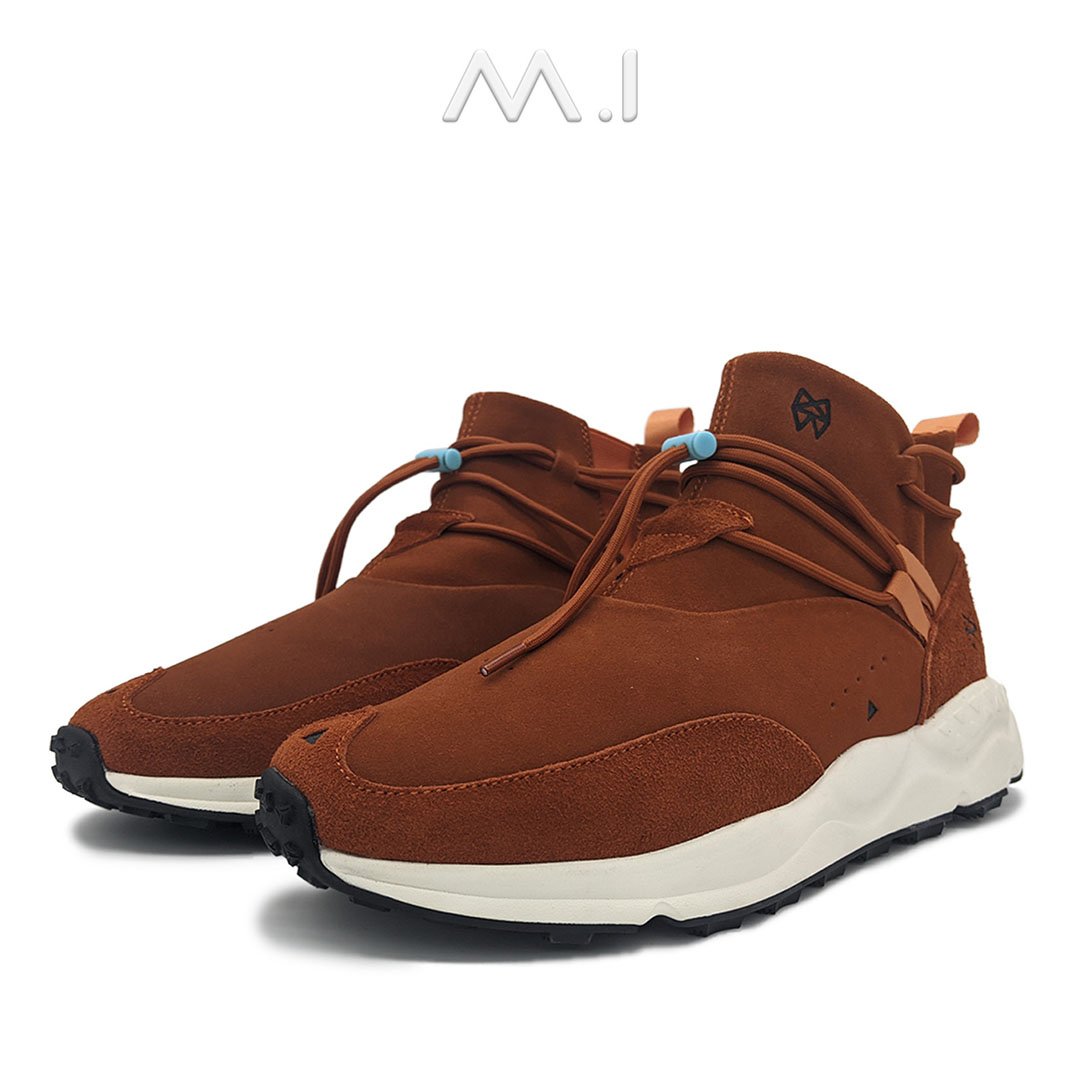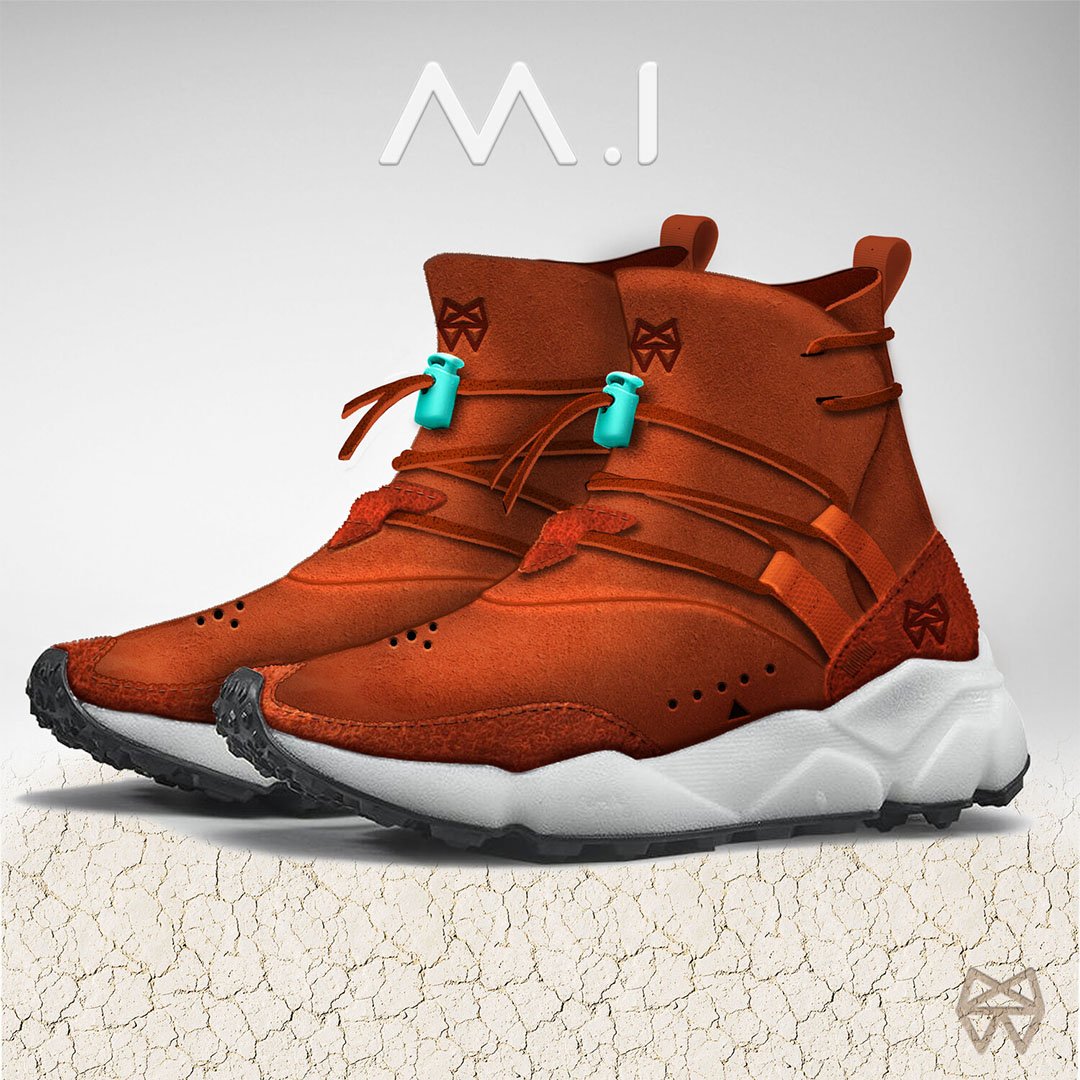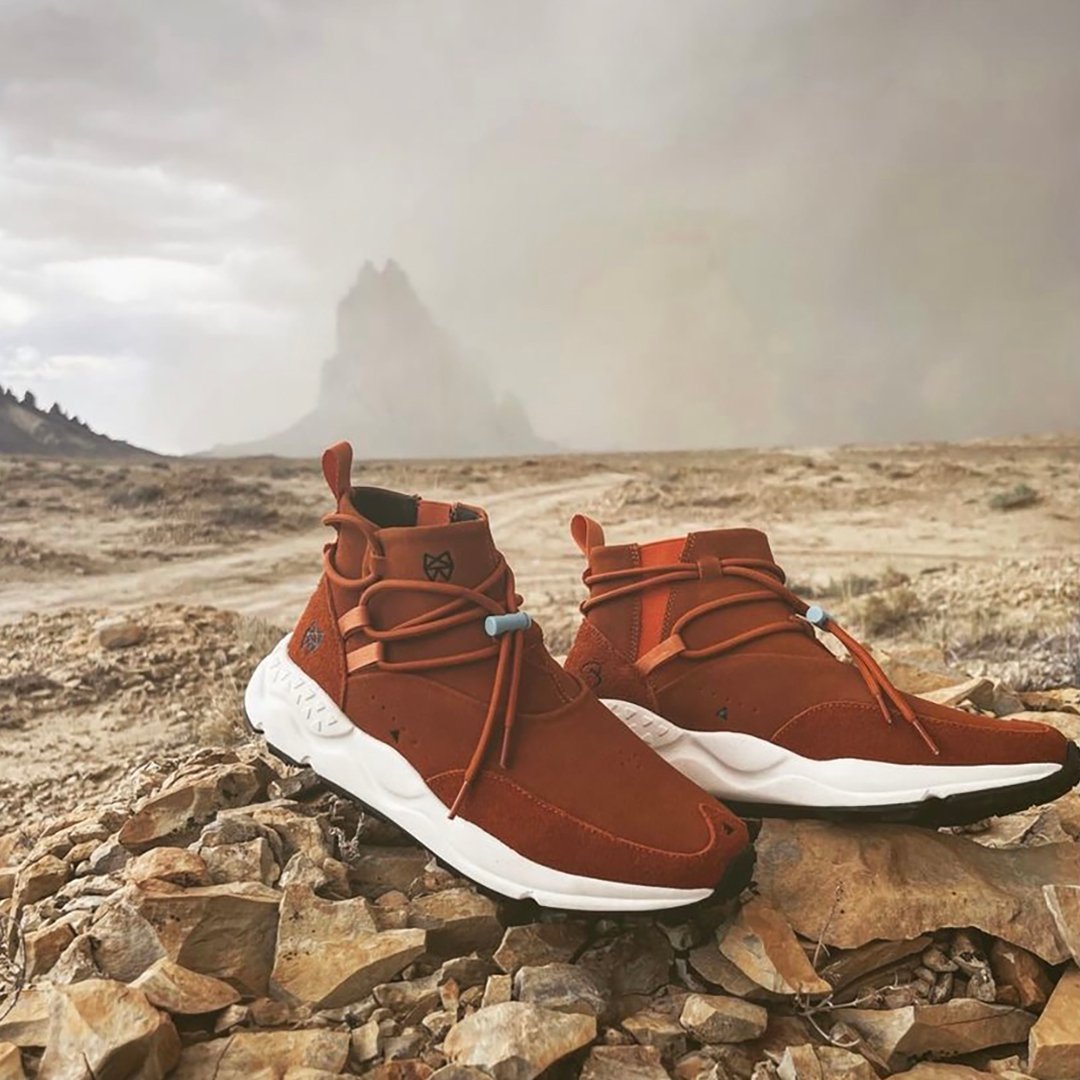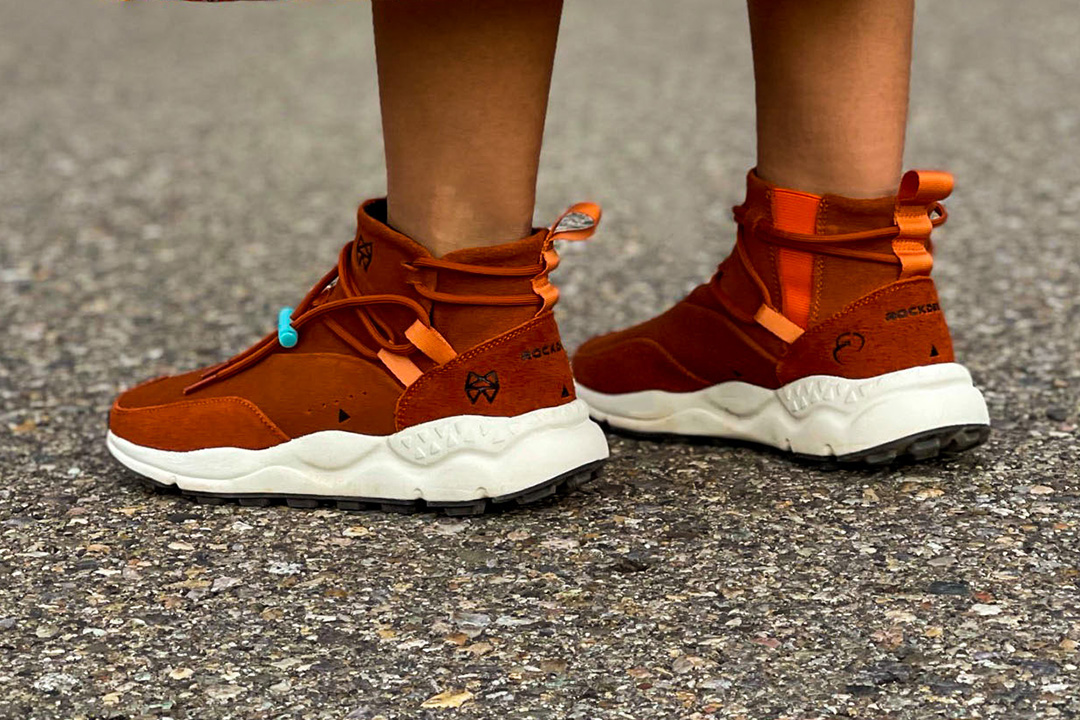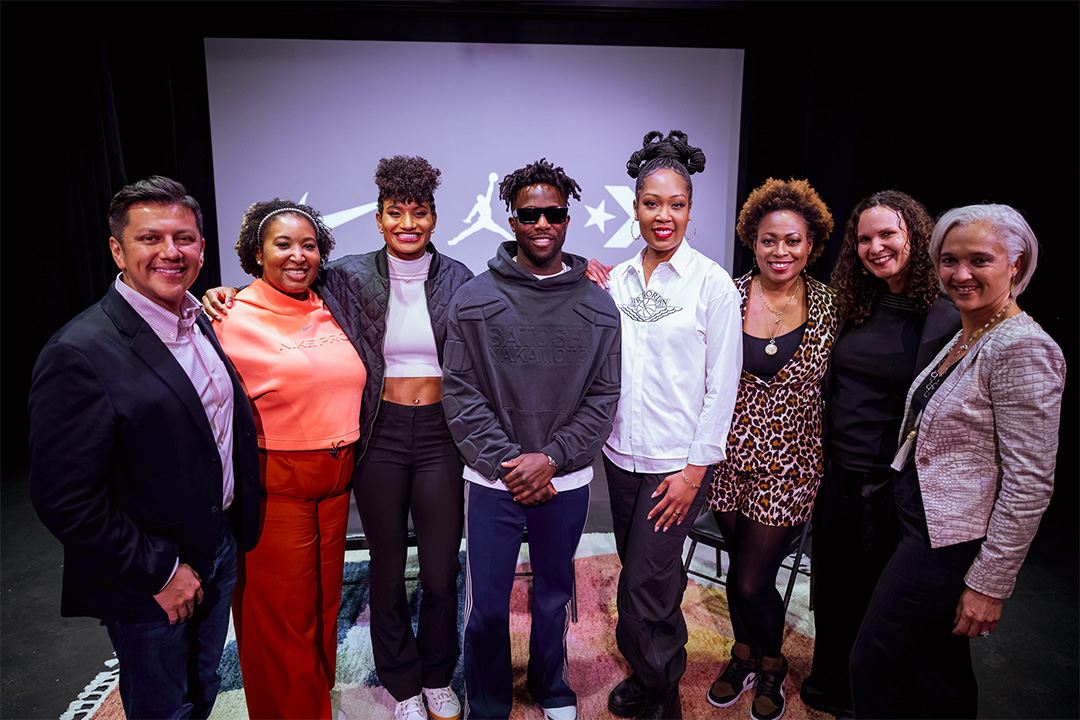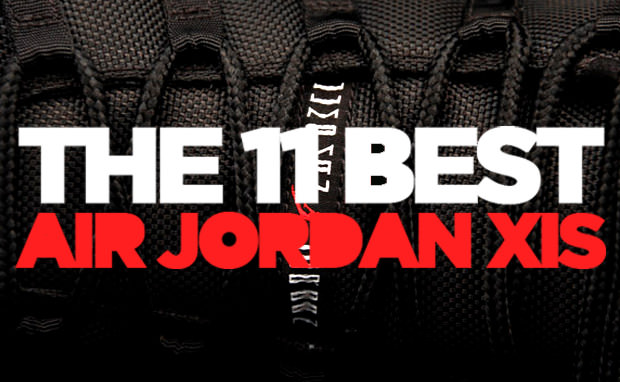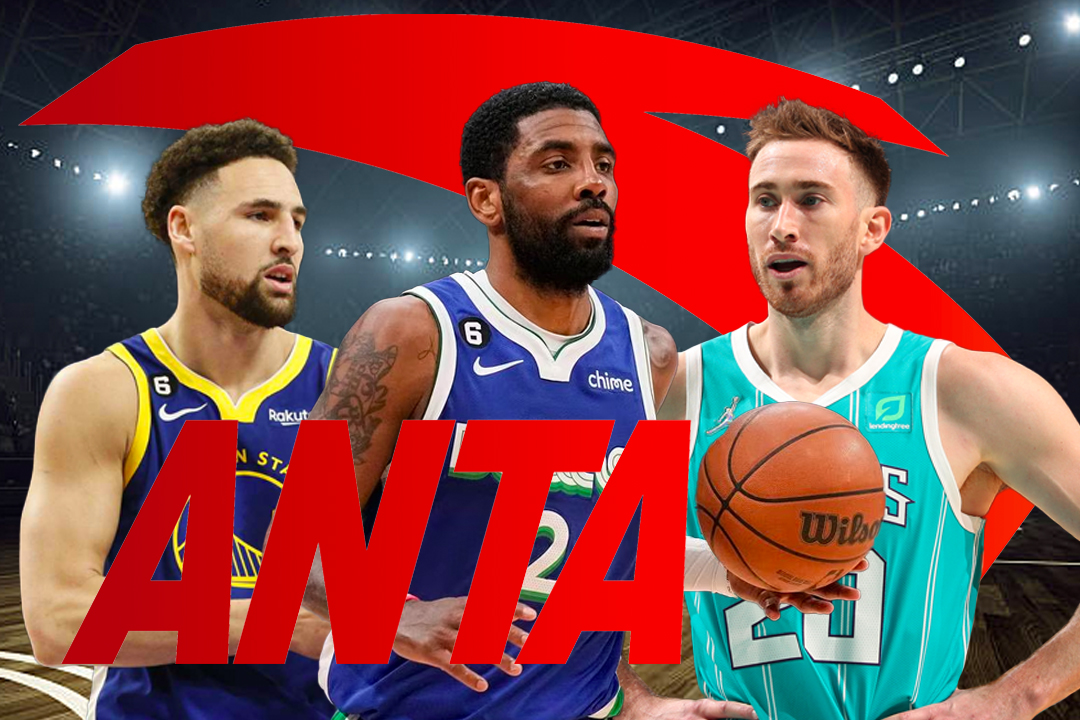This post may contain affiliate links. Please read our disclosure policy.
Long before the “land of the free and the home of the brave,” there was a nation of people that walked in beauty. Surrounded by four sacred mountains and guided by their ancestors, Native American people lived on untouched soil that would one day be taken from them and overhauled by colonialism. The America that indigenous communities know today is one that erases their legacy and neglects their people. In a country that prides itself on being the “melting pot,” representation is not an equal experience and for Native Americans — it’s almost non-existent.
But for Dewayne Dale Jr., his Navajo culture is a badge of honor that he wears with pride. Representing the Red Running Into Water, Born for Water’s Edge clans, Dewayne grew up in Shiprock, New Mexico on the Navajo reservation – or as Dewayne calls it, The Res. As he observed the world around him, Dewayne couldn’t help but notice that life was different for him compared to the country at large. Although New Mexico is known as the Land of Enchantment for its wondrous terrain and wide open spaces, something about The Res felt small – and Dewayne knew he needed to do something bigger.
After receiving a baseball scholarship, Dewayne was able to attend college where he decided to study health sciences so he could pursue athletic training. Dewayne loved sports as a kid so choosing a career centered around athletics made sense to him. Sports also introduced Dewayne to sneakers, which ended being a passion that wouldn’t exert itself until later on in life. Dewayne became curious one day and Googled, “What does it take to be a footwear designer?” The rest is history.
With no hesitation, Dewayne went back to school to get a third degree in pursuit of a career in the footwear industry. After noticing the term “Industrial Design” on a Nike job posting, Dewayne did some research and felt like he finally found the answer to the question that had been wondering about for years.
Once Dewayne completed his degree in Industrial Design, he landed a job on an innovation team where he worked for brands like KEEN Footwear and Chrome Industries. He was excited that he finally got his foot in the door and was working as a designer, but Dewayne felt disheartened as he realized the lack of representation of Indigenous people within the industry. Yet even with no representation, Dewayne kept noticing that his culture was inspiring mainstream trends. He would often show up to design meetings where companies would present Southwest-inspired moodboards that included compartmentalized images of Navajo culture.
With the hype surrounding Visvim’s Voyageur Moc Shaman and even the Travis Scott x Nike Air Max 1 that features tribal prints and beading, we have to ask ourselves why Southwest aesthetics are working for everyone else except those that are most connected to the land itself. In recent years, there’s been a big push for representation in a multitude of industries, but even then, it feels as though Native Americans sit at the bottom of the totem pole – even though they invented it.
Although Dewayne felt disappointed that others were cashing-in on his culture, he stayed focused and kept working within the industry in hopes to make a change. Destiny finally presented itself to Dewayne when he was approached by Rocky Parrish, the CEO and Founder of ROCKDEEP footwear. Parrish offered Dewayne the opportunity to create his very own signature shoe in which ROCKDEEP would manufacture, but Dewayne would have free reign of design. This was the opportunity that Dewayne had been waiting on for years, and finally, FIFTH was born.
Established in 2020, FIFTH is Dewayne’s signature sneaker line that combines authentic Native American design with contemporary footwear. FIFTH’s development process came natural for Dewayne, who had been preparing for this moment years before ROCKDEEP approached him. Dewayne had always dreamed of what the modern moccasin would look like and how he could make it accessible to his fellow Diné people. He wanted to create a shoe that would uplift the story of his heritage, but also compete with the advanced sportswear tech that’s available on the market. With a sellout launch and a restock in the works, Dewayne feels like he’s finally representing for The Res and forging a new path for Native American history.
—

Nice Kicks: How did you get started in footwear design?
Dewayne Dale Jr: “So I went to school for health science and then went to grad school for athletic training, like sports medicine, because I love sports and wanted to be close to it, and that was one of the few ways that I could actually be involved with athletes. So I did that for a little bit. I don’t want to say I’ve always been creative, but I always had a knack for [design.] I loved footwear when I was younger. I loved the stories that you could start to see from the engineering parts of the outsole to the upper patterns. That kind of carried on and it hit me back in 2011-2012 when I was modifying my own outdoor gear. It came down to just Googling who designs shoes. I literally Googled, ‘What does it take to be a footwear designer?’ I didn’t know who did it. I had no idea who was doing all of this, and you don’t get those questions answered in school. It’s amazing how the idea of going to school is so that they can teach you that there’s so many things to do, but when you get there, it’s [limited.] Anyhow, long story short, there was a Nike job and there were these little keywords down below, and it said ‘industrial design.’ I’m like, ‘What is that?’ So I Googled that and saw all the images of what it is. I always felt like I’ve been doing that for a long time. I just never had the title. So I stopped what I was doing, and my family and I moved to Portland, Oregon. That’s where I went back to school for a couple more years. My past two degrees helped with all the general stuff, so I just went and did a focus on design. I wanted to learn more about it, but I also wanted to do it in the heart of footwear companies.”
How did you get introduced to sneakers?
“Growing up on the Res – we always call it the Res – but basketball is such a big sport. I loved basketball and I remember starting to see how shoes changed from your typical Jordans, and evolved into something else. I’ve always loved when that started. For me, growing up in the 90s, there were a lot of cool things happening in footwear that I gravitated towards, and that’s something I held onto all through college, but it wasn’t until 2011-2012 that I put two-and-two together and was like – I love this. I’m just going to try to do this. There’s nobody where I grew up that’s done it. I’ve always had no one to ask. I literally had no one to go to as a reference going into this industry.”
What was the first sneaker that caught your attention?
“The first shoe that really caught my attention was the Nike Air Max Uptempo ‘95. I think that’s the one with the first colorway I saw in Foot Locker in Farmington, New Mexico. It was a white upper with a bubble cushioning system and white, black, and teal at the bottom. I liked those little teal ovals. It was just a really cool looking shoe that caught my attention. That stayed with me for a long time. Right now we’re still kind of in this chunky [phase]. To me, that’s how I grew up. That was what it was. It was like chunky-looking shoes because back then, the technology wasn’t as advanced, so you had to almost overbuild a shoe. Now we can make a sock-type sneaker, very minimal, but we choose to go back and make it bigger, which I think is cool. I’m here for it.”
What was your first job in footwear design?
“My first gig, out of my third college, was being a designer for an innovation team. One of the brands was Keen Footwear. Another brand was Chrome Industries, they’re like high-end urban cycling gear. While I was on that team, I worked on a lot of projects because I was using everything from hand-sketching, to laser cutters, to 3D printers, and just kind of making things. So that’s kind of how it all started.”

What has your experience been like working in the footwear industry?
“The industry is very interesting. If you know somebody, you can get in. Not to say that everybody who gets in doesn’t have talent, that’s not it. It’s just that if you know somebody, you’re way better off at getting into a place. I’ve seen a lot of talented people not working in the industry and vice versa. There’s a lot of people that aren’t as talented working in the industry because they know someone. But I’m like cool, I just wanted to be in. I want to share my story and my perspective, and that’s kind of where it landed me with the stuff I’ve been working on.”
How has your work developed over time?
“I just try to get my hands on as many projects [as possible]. I moved from the innovation team to an advanced concepts team. Then I worked in-line for some more commercial products where I did Keen’s hiking boots, some of their sandals, and a lot of kids stuff. Then the pandemic hit and I decided to start my own. I’ve always wanted to do something that I felt was missing for a long time, which led to my brand, which is called FIFTH. To me, it feels scattered because I still have part of my brain in sports medicine, human anatomy, human physiology – and then the other parts like the design element. So I love combining those two.”
From the concept stage to the final product, what’s your favorite part about bringing a shoe to life?
“Honestly, footwear design can be pretty dirty. It can be dirty in the sense that you are really involved in the product. And that’s one of the things I love, getting down to millimeters of the lugs, and shifting something over like 2 millimeters. I geek out on stuff like that. I love designing new tooling or new outsoles and midsoles, just because I really get to pick where the lugs are going to be placed, and the shape of the outsole, the shape of the midsole, and then even the upper. I think the upper is really cool because we’ve come a long way in pattern engineering. I grew up seeing a lot of moccasins and simpler footwear patterns. Then seeing patterns now, it’s really cool. I’m always blending those two in a way – the old and the new.”
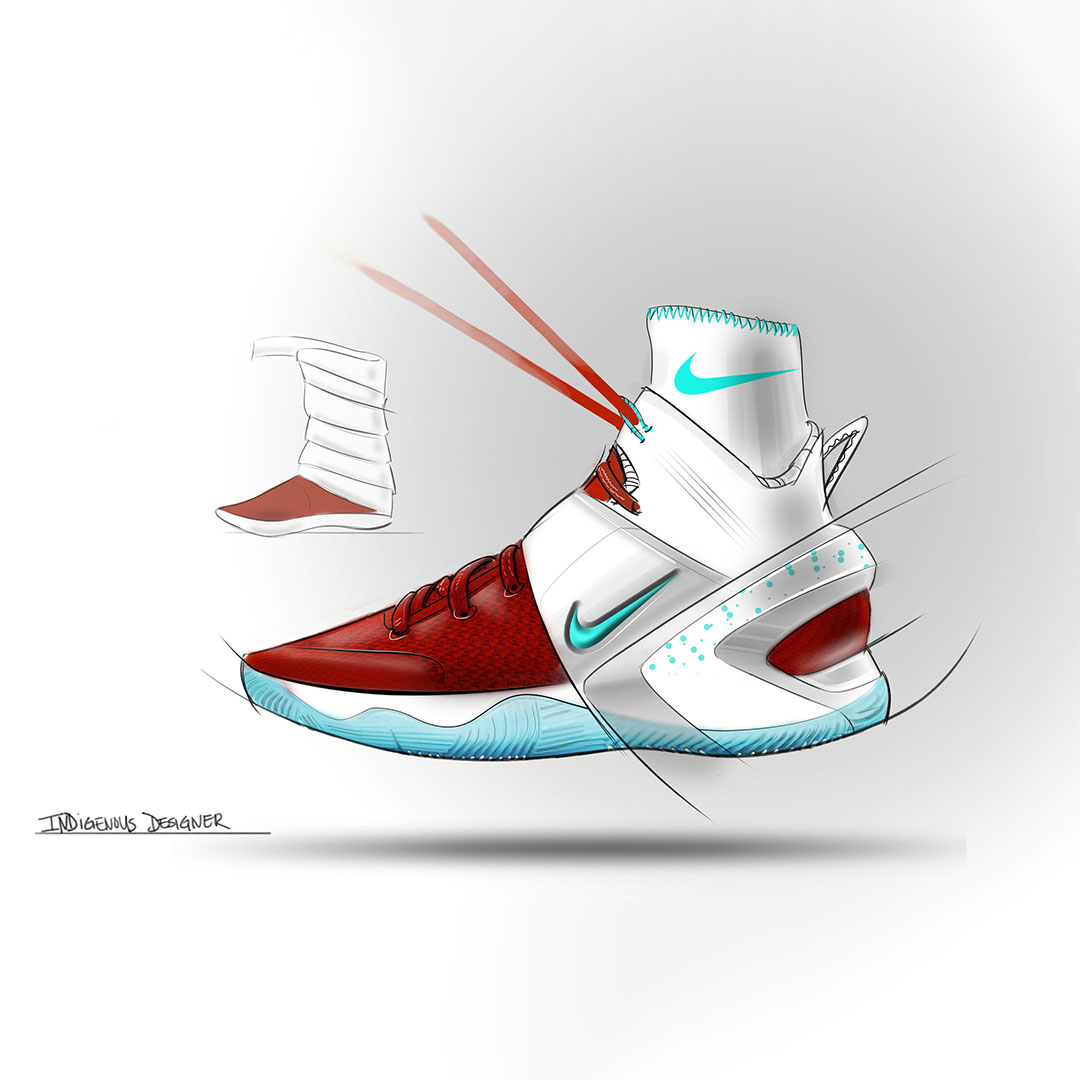
What’s been one of the most memorable sneaker moments in your life?
“When I was really young, maybe like 7-years-old, I used to go to my grandpa’s house, and he would have these yard sales, and invite a bunch of people over to sell at his yard sale. I was young and I had a pair of Jordan 3s on. I was just running around but they were torn, like the vamp and everything had holes in it. I loved them so much and I wore them all over the place. There was this Black dude selling at my grandpa’s yard sale and he called me over and asked me about my shoes. He was asking why I’m wearing them because they have so many holes and stuff like that. But then he was like, ‘Let me make you a deal.’ And I said, ‘Alright.’ He pulled out this Army duffel bag thing and he’s like, ‘I’ll give you these, if you give me those on your feet,’ – which were like the same Jordan 3s, but in the University Blue color, same size and everything. It was cool, we made a trade. I didn’t know who he was, but that was one of those moments in my life. That’s what I love about the culture of sneakers. And I mean I was just a little kid. That dude maybe was trying to sell them, but probably saw that I wore those things to the ground and was just like, ‘Hey, I want to switch with this kid.’ It’d be cool to one day figure out who that was, but that was always a story that I thought about a lot. It felt like, ‘Did it really happen?’ When you think of sneakers and the impact it has on a lot of people, and not just not how many sneakers you have, and not what’s the hottest one out there – sometimes it goes deeper than that. That’s one thing I’ve always loved about how strong sneaker culture is.”
How do you make sense of the sneaker craze? What is it about sneakers that make them so fascinating?
“Sometimes I think about that question. I think a lot about how people walk around, everyone’s walking around. When you look at clothing or anything you put on your body, it’s like there’s one thing that doesn’t look as different. Me and another guy could wear a hoodie or a pair of jeans, and it would probably fit one of us better than the other, but with shoes, there’s more of a commonality. There’s something very cool about footwear that we can all share. I think that’s appealing to everybody because anybody of different size could have [the same] style. There’s this cool common trait that no one sees, but it transforms your feet. And when you can do that to a product that you always have contact with, you start to create this bond in a way, a weird connection with this non-living object. You put shoes on to do your entire life with, so it really becomes deeper when you start to think of it. That’s why when you can make something that you have a deep connection with look like something you really like, then people are going to be crazy about it. But I think that’s only a small bit of what you can do with sneakers.”
How did growing up on the reservation influence you?
“I grew up in Shiprock, New Mexico. It’s the Northwest corner of New Mexico, very close to the Four Corners. It’s on the Navajo reservation. I like to reflect on how my town shaped my view of things and products. Growing up on the Res – I viewed electricity different. I viewed water different. I viewed clothes different. I viewed what it meant to play outside, what it meant to entertain yourself, a lot of things like that – differently. It helped shape me to try to do more with less. When you get into this industry, it seems like the possibilities are endless in a way, but I like to rely on how I grew up in terms of I could do more with less. I’m only going to get out what I put in. That’s how I was raised and I think it’s a nice value to have. I’ve always had a connection with observation, being able to observe and in turn tell a story, but then add the form at the function. It took me a while to realize, but I will say this, when I got my first design job it was with innovation, but then I did Keen commercial. When I got there, being able to tell a story with my life experiences felt like I had an advantage.”
What tribe is your lineage rooted in?
“Navajo, but when you’re Navajo, we don’t stay, ‘I’m Navajo.’ We say, ‘We’re Diné.’ Diné is Navajo for ‘the people.’ I have four clans and usually you start out sharing your clans. In English my clan is Red Running Into Water, born for Water’s Edge. My mom’s dad’s clan is the Bitter Water clan and my dad’s dad is the Yucca Fruit Strung Out On A Line clan. When you share your clans, other Diné people are able to see if we’re related through a clan system.”
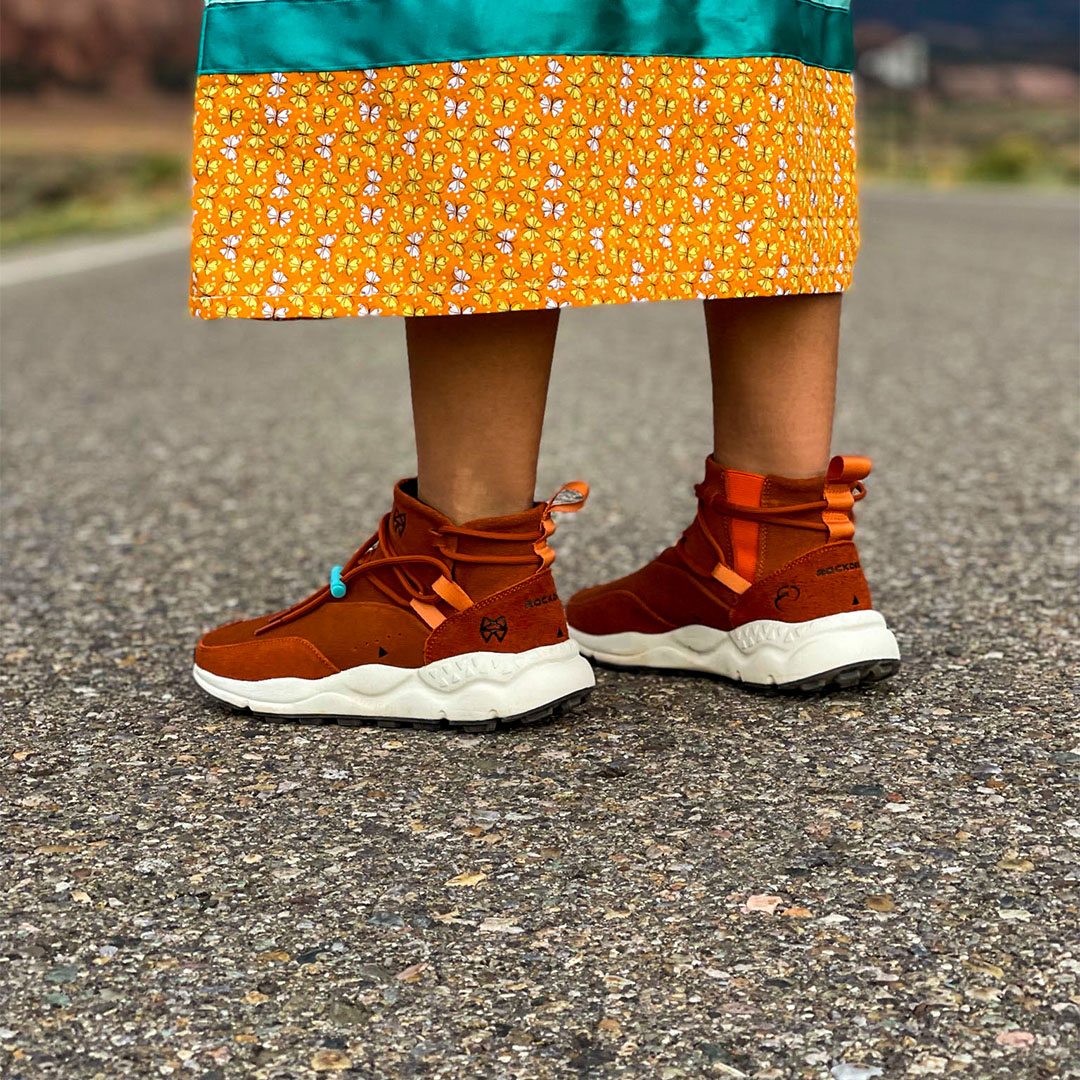
When did FIFTH first get started?
“2019-2020, during the pandemic. This company, Rock Deep, the owner of it his name is Rocky Parrish. He reached out and pitched me this idea of doing a collaboration. For me, it was something that I’ve always wanted to do. I’ve had all these sketches of the modern moccasin. Whenever you have a design, you try to figure out the development process – who’s going to make it. So with him, he had his development process already created and we could just team up to create this shoe that was signature. Basically both of our brands worked together on that. It was cool and I think the point was made in terms of that I wanted it to be different from what any other brand has been doing.”
How has your community reacted to FIFTH?
“I’ve had a lot of elders reach out and say, ‘This is one of the coolest things I’ve ever seen.’ When you get compliments from your own people, you know you did something right. But I will say that your own people are also your toughest critics.”
What’s the meaning behind the brand’s name, FIFTH?
“Back a long time ago, Navajo people used to live on bigger land before they were put on a reservation, but their land was always in-between these four mountains. One of the mountains sits in Flagstaff, Arizona. One sits in Colorado. Another one sits in eastern New Mexico, and then there’s another one that’s south. It’s a big chunk of land and a lot of my elders would say, ‘You’re never truly home unless you’re within the four sacred mountains.’ I’ve always liked that. That always kept me focused when I was in college. So I wanted to call the brand FIFTH because I always saw myself as this fifth part within the four sacred mountains. But it’s not just for Navajo people. It’s really more of a way of thinking in terms of we all have our own center. Maybe it’s home, maybe it’s in the studio, maybe it’s a certain music you listen to – whatever it is, it centers you. That’s where FIFTH came in. Also in Navajo culture, there’s five worlds, and it’s a really long story, but the fifth world is the glittering world, which is where shoes and all this stuff is happening, so FIFTH always made sense to me.”
Tell me about FIFTH’s debut sneaker, the M.1 Trail.
“The sneaker I did for FIFTH I wanted to make sure that the people who I’m doing it for, which was for the people back home, people on The Res, that they understand. I knew they were going to understand the colorway and understand the silhouette. Even when they look at it from a distance they’re going to be like, ‘Oh, that looks like a Moccasin,’ like yeah, it is. The reason I wanted to do that is because we have such a strong connection with our moccasins. I didn’t want to replace that, but I wanted to celebrate what we had. To do this [sneaker], where I grew up was the story. Big brands aren’t designing things or coming out with things for people that live where I live. The general population and all these numbers, that’s how [they] create. Because if you can focus on that, you’re going to get what you put in. But for me, I wanted to flip it. I’ve been to a lot of design meetings and I’ve seen different teams or designers that would present stuff, and they would have things up there like Southwest culture, or even pictures of moccasins. And for me, I was always like, ‘That doesn’t make sense.’ So I wanted to do that. My story was to create a shoe product that doesn’t just live on an inspiration board. You think of brands like Visvim, you think of brands like Minnetonka, all these brands that come up with these moccasin meets future [silhouettes]. What always got me is that there was no one like me doing it. I wanted to be able to give back to the kids who want to wear their moccasins to school, but they couldn’t wear them all day because in P.E. they’re sliding all over the place because it’s just leather. So if I created something that had a grippy bottom and looked like something they grew up with, [I knew we could reclaim it]. It was the places I lived in, the colors I saw, and the culture that really brought that out. To be honest, another part of the story is that most brands can’t go there because there’s a lot of red tape. In a way, if there’s no one like me on the team, they’re going to be like, ‘Why did we go there?’ So it gets kind of political in a way.”
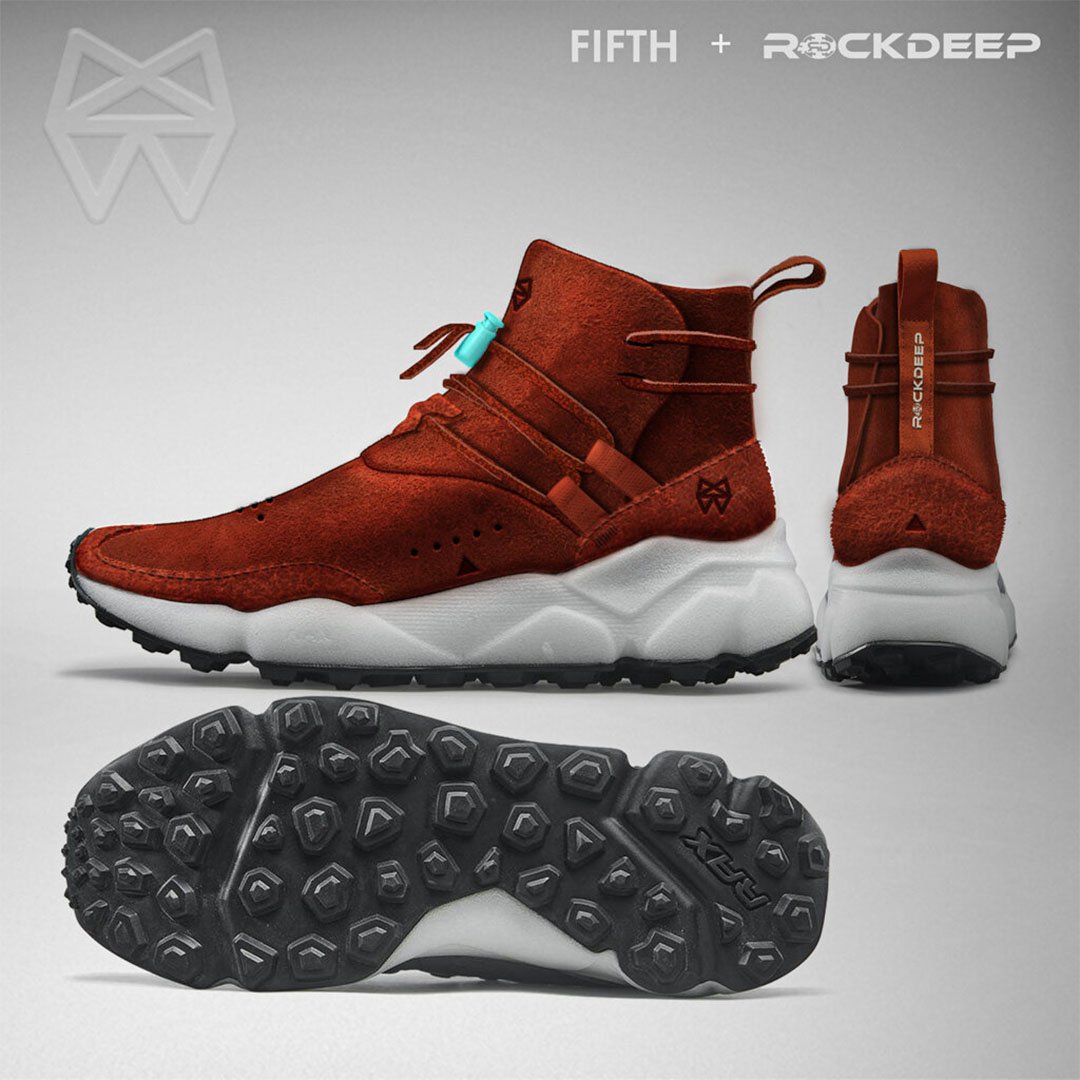
Do you think brands have gotten better at creating a space for representation within the footwear industry?
“A lot of footwear companies now are hiring more people of color. There’s been such a big push and rightfully so. Things that were created in the past, the people who were behind them, we didn’t know who they were until now. In that same sense, you can’t just go and create a moccasin, and pull all these images of past moccasins of different tribes, and then turn it into this sneaker, and slap a big logo on it – but brands still do it and it’s not authentic. I’m not saying that they need to get a Native person in the room every time they want to design something, but on a certain level – they should. I lived in a small desert town and I’ve always argued with people that there’s so much culture. Where I grew up inspires a lot of brands. Today I see Southwest stuff all over the place and it’s always done differently. I realized I needed to do this because no one else has done it. I needed to be in there. It was this question of, ‘Why am I not?’ or ‘Why aren’t we involved in that?’ I had the knowledge and tools at hand to go do it. I felt like I was taking back a lot of the design elements that I’ve seen kind of just splashed all over the place. I wanted to prove that there are Indigenous designers out there that don’t just do handcrafted stuff. If given the opportunity, we can put our spin on something that’s commercial.”
There’s little-to-no representation of Indigenous people in sneakers, but are there any areas that you do notice representation? Whether that be an event, a social media page, or even indigenous influencers or creatives.
“Honestly, I don’t. I can’t be the only one. There’s got to be a handful. There’s just not enough to make that difference.”
As a designer, how do you add to the sneaker community?
“My style [is] way different than someone else’s and that’s what I’ve learned. I’ve learned to own my style, my thought process, and my perspective. Everybody has different tastes. I like creating things that maybe even non-Native people like, which is what I hope. I’ve learned that people in Europe had ordered the first round of [the FIFTH M.1 Trail shoes], which was really cool.”
What’s next for Fifth?
“There’s a collaboration coming out this Fall. I think I’m going to start teasing that. It’s not with ROCKDEEP. It’s with Manitoba, they make these more northern-style mukluks. That’s one of the ones that reached out, and they said the same thing, ‘We didn’t know there was an Indigenous footwear designer.’ So I’m glad that they want a lot of their future shoes to be designed by Indigenous artists. They had an Indigenous artists series, but they never had a footwear designer come in and do different things. I’m here for it.”
As a designer, what do you hope to accomplish next in your career?
“I honestly want to be able to influence a lot of Indigenous artists and designers, but at the same time, I also want to just keep pushing the envelope in terms of the industry. It creates cooler products. On an innovation team you’re taught that the more different you are, all of you are, the better the product will be because we all have different views and different perspectives. Sometimes products feel like it’s all the same. There’s not many things out there with a really cool story. Just because it’s expensive doesn’t mean it’s a cool story, which is hard to explain to a lot of kids. I just love stories and how stories push design.”
—
Follow Dewayne Dale Jr. and FIFTH on Instagram.
To purchase a pair of the FIFTH x ROCKDEEP M.1 Trail shoe, visit rockdeep.com.

